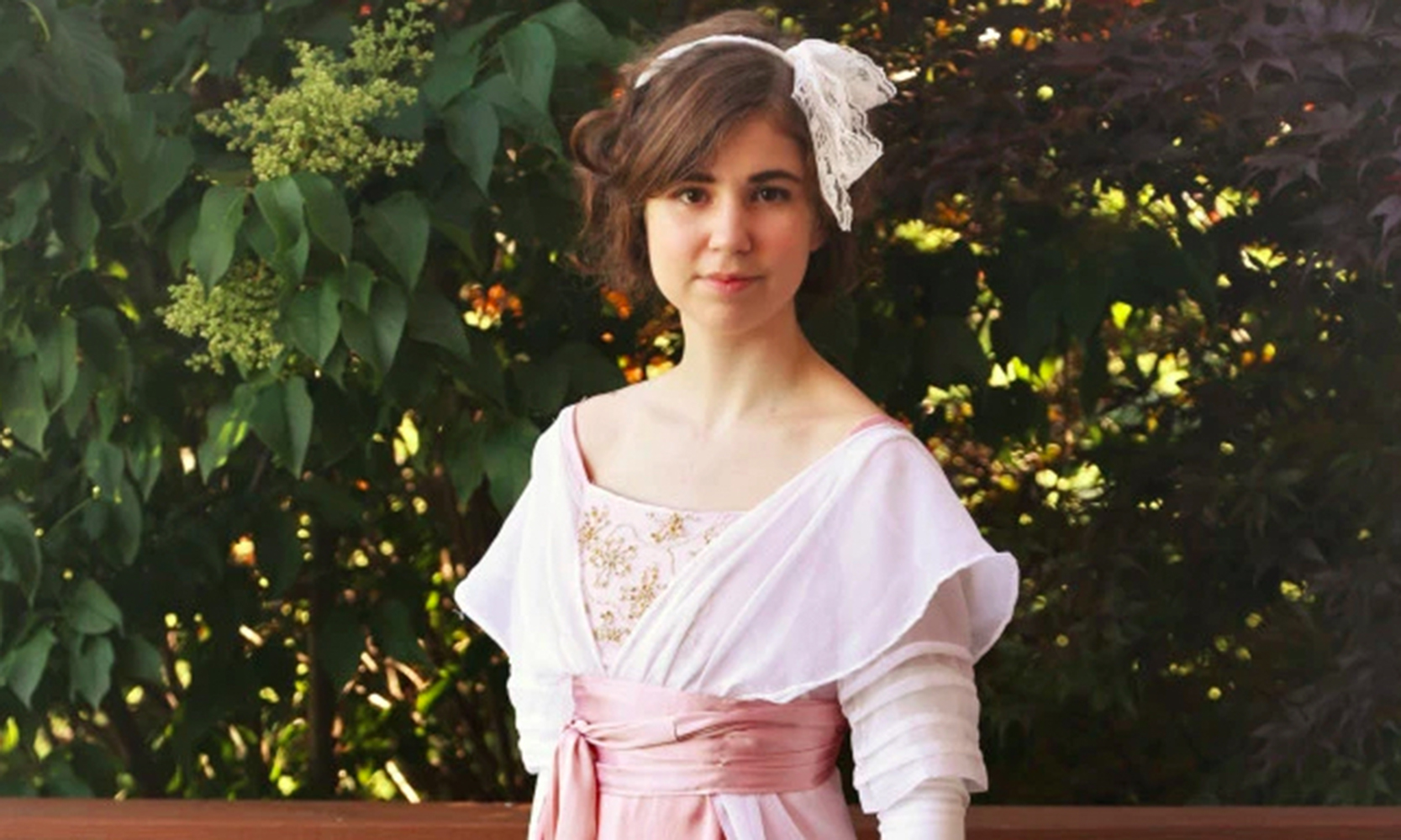
Six days a week, College of Business junior Amelia Marie Schmidt focuses on homework, exams and studying. But on the seventh, the focus shifts from accounting to apparel.
Jedi costumes. Renaissance clothing. A Titanic-era inspired dress, drafted from instructions in a 1910 dressmaker’s textbook.
“I wish Halloween was more than one day a year,” Schmidt said. “Putting on an outfit — something special that you don’t see every day — really is transforming. There are so many ideas, but not enough Halloween.”
We caught up with Schmidt to talk about her love of fantasy and the importance of being authentic when operating within that world.
Did your love of costumes come from Halloween?
My first costume that I made was for Halloween — a Jedi — but it’s not where the interest began. It came from writing fiction. Since I was 13, I’ve been working on a fantasy series that’s medieval inspired. Doing research for it — it’s important for a writer to understand the world their characters are in — I looked into wars, architecture, technology and fashion during that time period. But fashion and the history of fashion really stuck with me.
When I sketched out a dress for one of my characters, I thought, ‘I wish I had this dress.’ So I decided that I’d learn how to make it myself.
Did you make that dress?
Not the exact one, but I did make a medieval-inspired dress. It was the second costume that I made. It is red with white under layers, silver trim and black ribbon.
What’s a go-to costume that you have?
I mentioned making a Jedi costume when I was 14. I did an upgrade of the costume a couple years ago and it is now very Anakin-Jedi inspired. It looks like it’s out of Revenge of the Sith, which is my favorite Star Wars movie. It’s warm and relatively easy to wear. And I feel powerful while wearing it — especially after putting on the black leather glove, which I also made.
You lamented that Halloween is only once a year; where else do you wear your work?
I do go to other events where I can dress up, like I’m going to a Star Wars celebration in Chicago where I’ll do a cosplay competition. I like the Star Wars costumes because they are based off trends from the past. For example, the Jedi costume has historic Asian fashion influence.
I also have friends who do historical reenactments. So there’s a place for it there too. I’m currently working on a 1860s Civil War–era corset for someone; I’m even using synthetic whalebone — I found a company in Europe that makes it — instead of the modern spiral steel for the corset since it’s more like the original material, where body heat molds the corset boning over time to the natural curve the wearer’s body.
My first corset I made was for my 1912 Edwardian gown, the dress drafted by using the 1910 dressmakers textbook. I ordered materials that would have been used during the time. I even tried tea dying, a process used at the time to color fabric.
You can feel the difference when you wear clothing that has authentic attention to detail. It’s the same with costume design — details from the shoulder tucks and stitches, invisible stitching on the neckline, the embroidery. The attention to detail in costume design is what helps your character come alive. Or, when used in historical clothing, what helps you experience life in another time and place.
I’m still looking for the right event to wear my Edwardian evening gown. If you hear of a Titanic-themed party, let me know.
How does a business education fit in all of this?
It’s a great background to have. My classes help me with my budgeting for costumes, material ordering and time managing how long a project is going to take. I also have a blog and Instagram account and Etsy store. Since I’m an entrepreneur, marketing is important too.
I’ve also gained lessons outside of class. Earlier this year, I took part in the first spring show that the campus fashion club, Fashion for a Cause, did. I set to work making sketches, ordering fabric and doing some binge-sewing even when I had a full class load. I had to make them to fit my models; it was my first time making outfits for people who weren’t friends or family. It gave me greater confidence on branching out to do costumes for others. And the models told me how great they felt in the clothes.
Ultimately, that is what it’s all about — feeling great in what you have on. And I want to continue to create so I can share my love of fashion with others.






